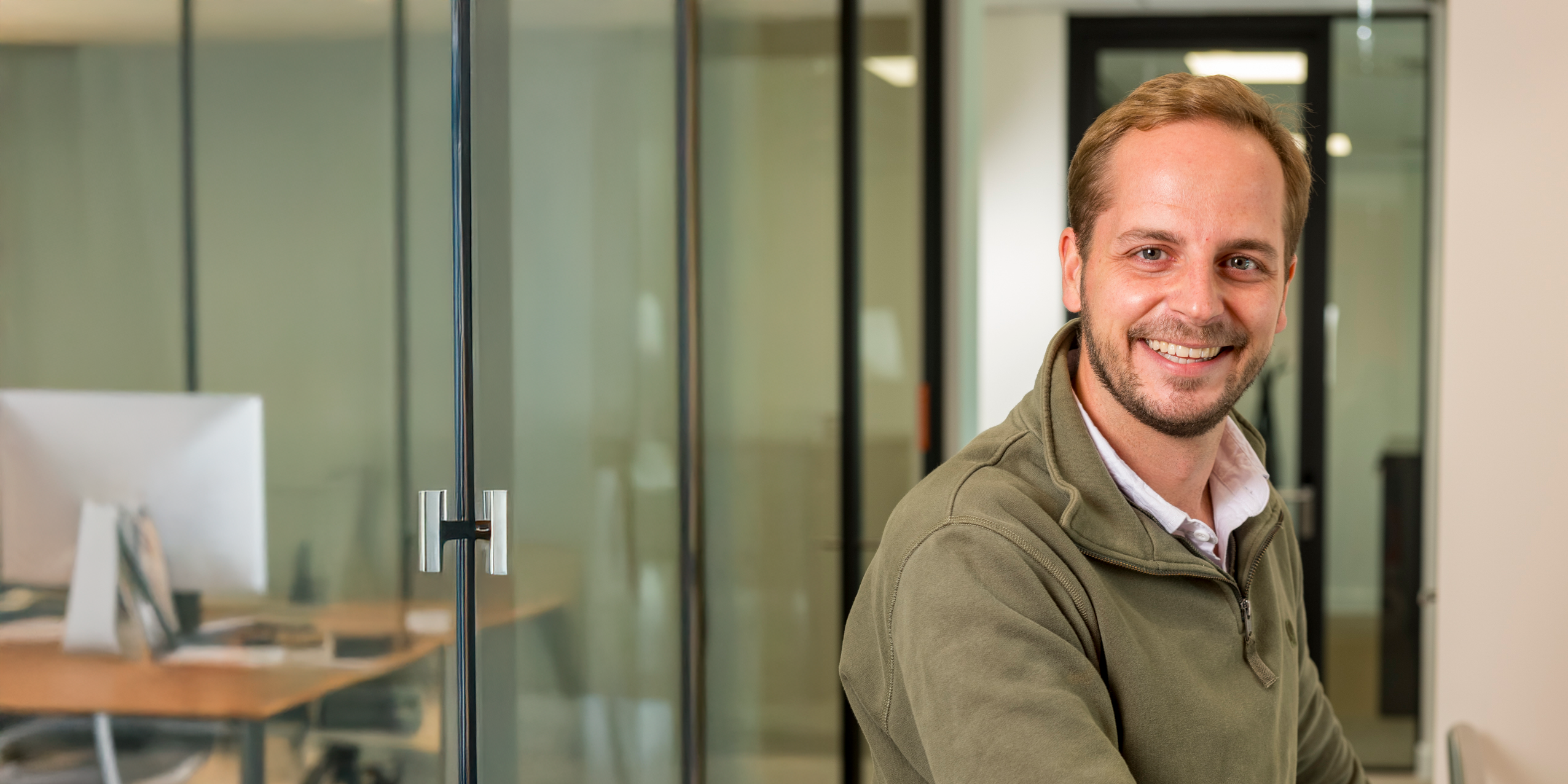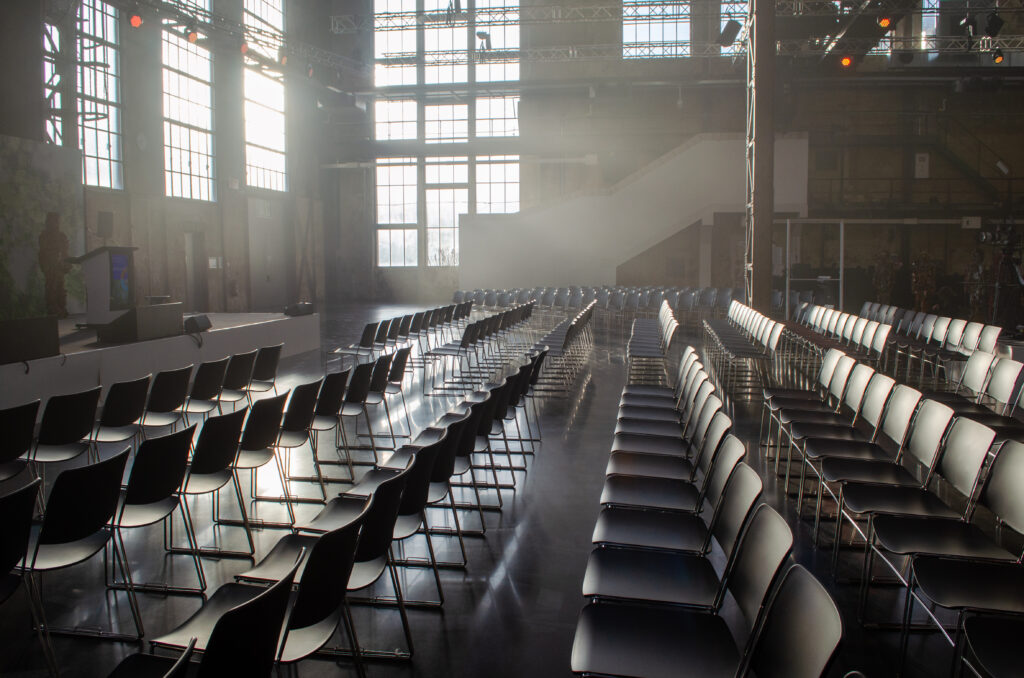An interview with our Sustainability Coordinator Tom

At Adexpo, Tom is currently focusing on sustainability. It’s an important topic that our Sustainability Coordinator is actively addressing. During a meeting with Tom, the marketing team asked a number of questions regarding this topic.
Tom, can you briefly introduce yourself and explain your role as Sustainability Coordinator at Adexpo?
My name is Tom, and as Sustainability Coordinator I focus on making Adexpo’s operations more future-proof. Our goal to obtain ISO 20121 certification is leading in this process, as it specifically focuses on developing a sustainable management system in the event sector. Having said that, I think it is important to emphasize that sustainability is more than only the environment, as social and governance play an equal role as well.
What motivated you personally to work in sustainability, and how does that passion fit within Adexpo’s mission?
My mother raised me to be conscious about sustainability, meaning that things as caring for the planet, buying fair food and products, and minimizing waste are my second nature. After having studied Environmental Science, I started at Adexpo, aiming to help the organization becoming market leader in the European furniture rental sector. In my opinion this is only possible if we lead the way and pave the road to the future, rather than following.
Sustainability at Adexpo
How would you describe Adexpo’s approach to sustainability in the events and exhibition industry?
To start, our business model is very sustainable already. The concept of renting it prevents waste from being generated, and when something gets damaged, we have our own workshop to repair or repaint our furniture. But of course there are also plenty of challenges. Right now we focus on reducing transport emissions and are searching for solutions to reduce plastic use.
What are the biggest sustainability challenges in the exhibition sector today?
The industry still struggles with single-use materials, inefficient transport planning and tight timelines that leave little room for optimization. Luckily, solutions to solve these issues are continuously and rapidly developing. Therefore, I am very confident that over the next years, we will be able to significantly decrease the negative effects of these themes.
How is Adexpo helping clients reduce their environmental impact at trade shows and events?
Most importantly by means of our business model: renting is better than buying. Also, we are strict on waste separation, and repairing damaged products. In addition, we are working on some new projects to reduce the negative environmental impact of our partners and us, which will be presented shortly!
Practical Initiatives & Improvements
Can you share specific initiatives Adexpo has implemented to make our furniture rental service more sustainable?
We recently adjusted some of our policies to be more in line with our sustainability ambitions. This not only resulted in greater awareness and business practices, but it also helped us becoming an official member of Better Stands!
What steps are taken to extend the lifespan of Adexpo’s rental furniture?
Regular inspections, professional repairs, re-upholstery, repainting, replacement of individual components and structured warehouse handling. Investing in maintenance delays replacement and reduces waste.
Are there new eco-friendly materials or products Adexpo is investing in?
We are exploring materials with higher recycled content, modular designs that last longer, and products made with lower-impact production processes. For example, we have furniture made from hemp and seaweed in our collection, and we are continuously looking for other products that are designed to “close the loop”. The goal is to combine looks, durability and sustainability.

Sustainable furniture: armchairs HALE STACK made from recycled PET, coffee tables BIT made from recycled plastic
Impact & Measurement
How do you measure the environmental impact of Adexpo’s operations?
As of 2025, we have started measuring our Scope 1 and 2 emissions. In 2026 we will start measuring our Scope 3 emissions as well and we are developing a more structured ESG measurement system to track improvements over time.
What improvements or results have we already achieved?
The most important and tangible milestone to date is achieving Better Stands membership. Soon, however, we would will start implementing the ISO 20121 sustainable management system, which will assure us to continuously keep improving with regard to sustainability.
Client Value & Collaboration
Why should exhibitors and event organizers care about sustainability in their furniture choices?
Because high-quality rental furniture drastically reduces waste, and improves the look of their booth.. It also aligns with growing expectations from visitors, partners and corporate sustainability policies.
What advice do you give clients who want to make their booth more sustainable?
Choose reusable materials, avoid single-use builds, focus on modular design and select high-quality rental items. Also, plan early: last-minute decisions often create unnecessary waste and rush transport.
Are there common misconceptions about sustainability in the event industry that you’d like to clear up?
Yes, sustainability isn’t more expensive by definition. Often, it actually reduces costs through smarter planning, reuse and efficiency. And sustainable choices do not mean compromising on design.

Row seating with sustainable chairs LINK 60X made from recycled plastic
Future Vision
What innovations or upcoming sustainability projects are you most excited about at Adexpo?
Developing a structured ESG framework, in line with the ISO 20121 Event Sustainability Management System, reducing transport emissions through better planning tools, and exploring more circular products in our collection. These changes will have long-term impact.
How do you envision the future of sustainable exhibitions in Europe?
More reuse, fewer one-off builds, better collaboration between organizers and suppliers, and a strong shift toward data-driven decision-making. Sustainability will become a competitive advantage, not a side topic.
If you could implement one big sustainability change industry-wide, what would it be?
Mandatory reporting on waste and GHG emissions, and reuse rates for all exhibition builds. If everyone measures it, behavior will change quickly.
Closing
Any final message you’d like to share with our partners and clients?
Sustainability isn’t about perfection. It is about continuous improvement. By working together and being transparent, we can make exhibitions more efficient, more attractive and more future-proof.



